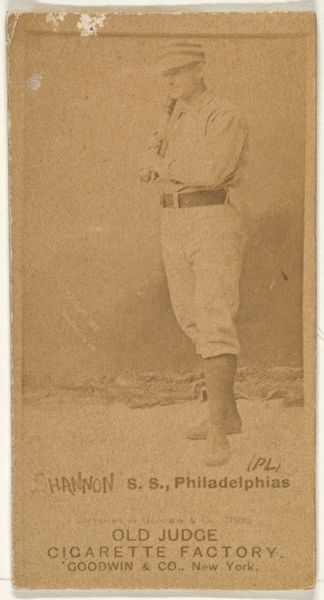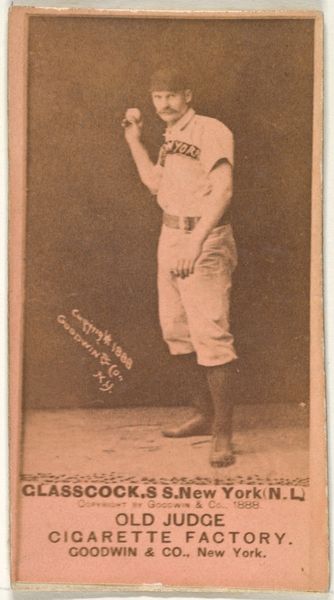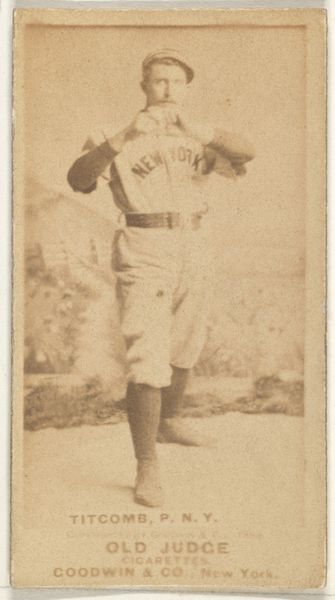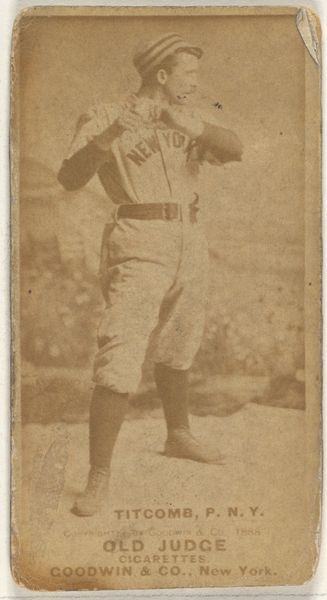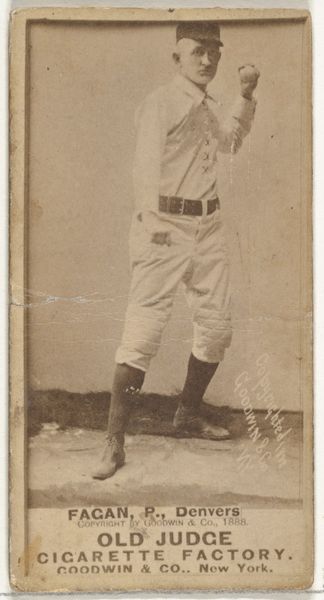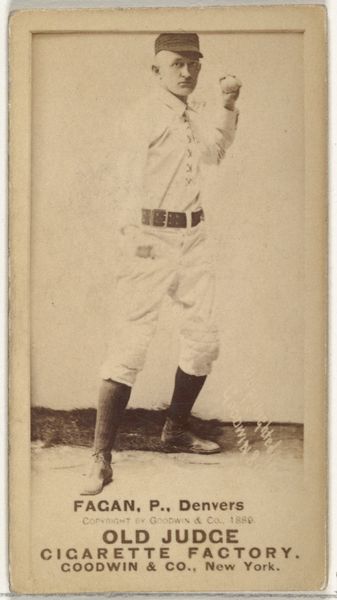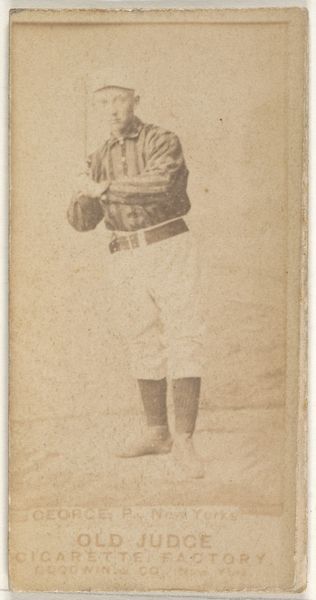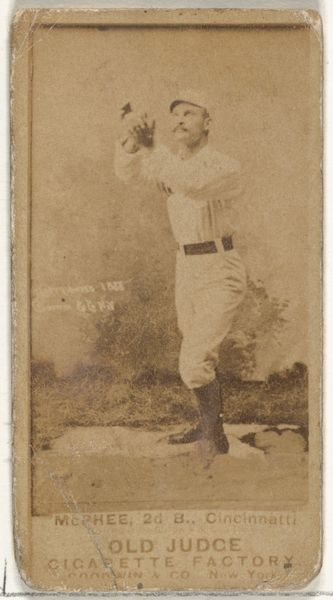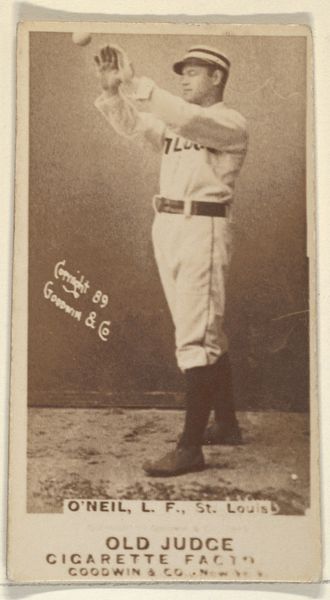
Lev Shreve, Pitcher, Indianapolis, from the Old Judge series (N172) for Old Judge Cigarettes 1888
0:00
0:00
print, photography
#
portrait
# print
#
baseball
#
photography
#
men
Dimensions: sheet: 2 11/16 x 1 3/8 in. (6.9 x 3.5 cm)
Copyright: Public Domain
Editor: This is an intriguing piece: “Lev Shreve, Pitcher, Indianapolis” from the Old Judge series for Old Judge Cigarettes, dating to 1888. It appears to be a print made from a photograph. I'm immediately struck by the fact that it's advertising—connecting sports with a very specific consumable good. How do we even begin to interpret this work? Curator: Think about it as a confluence of industry. We have the photography industry, churning out reproducible images; the printing industry, making mass dissemination possible; the burgeoning world of professional sports, seeking greater visibility; and, of course, the tobacco industry, looking to hook a new consumer base. These cigarette cards functioned as miniature billboards, inserted directly into packs. Editor: So, it’s less about individual artistry and more about… mass production? Was photography considered an art at the time? Curator: That’s the heart of the matter, isn’t it? Was the *labor* that went into this sort of image-making valued as *art*? The images themselves helped normalize both baseball and cigarette use for a rapidly expanding population that was creating a leisure culture centered on sports, but driven by consumerism. The photograph acts as both documentary evidence of Lev Shreve’s career as well as an inducement to consumers who aspired to some sense of "masculinity." The act of producing a portrait, distributing this via an industrially-made print, and linking that print inextricably to labor and material processes offers important insights. Were these cards like currency back then? Editor: Maybe! It does reframe my understanding of this baseball card, now realizing all the economic systems that meet here. Curator: Indeed. Consider also how fragile these are as physical objects. Cheap paper, destined to be discarded after the cigarettes are smoked. Surviving copies offer us an important link to understanding late 19th century life and consumption. Editor: That’s really changed my perspective. Seeing it as part of this whole system of production and consumption really clarifies its place in art history – not as a portrait, but as documentation of consumerist society.
Comments
No comments
Be the first to comment and join the conversation on the ultimate creative platform.
